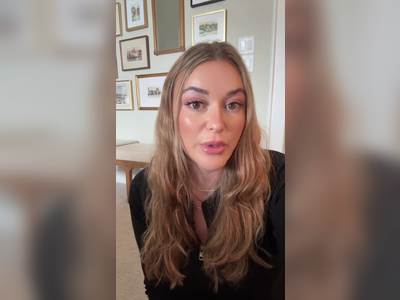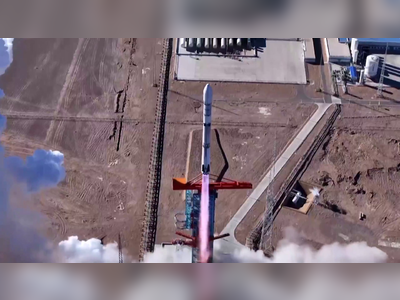
NASA Astronauts Return to Earth After Extended Stay on ISS
Barry Wilmore and Sunita Williams face challenges of recovery following nine months in microgravity.
NASA astronauts Barry 'Butch' Wilmore and Sunita 'Suni' Williams have been stranded on the International Space Station (ISS) for an extended period after their mission, originally planned for eight days, faced technical challenges with Boeing's Starliner spacecraft.
As a result, the mission, which was intended to mark the Starliner’s inaugural crewed flight, has evolved into a nine-month stay in orbit, posing significant implications for the astronauts' health.
Experts highlight the multifaceted physiological and psychological impacts of prolonged space travel, particularly in a microgravity environment.
Dr. Rebecca Allen, co-director of the Space Technology and Industry Institute at Swinburne University of Technology, noted that human physiology changes notably in space, including alterations in muscle strength, bone density, and even DNA.
Without the effects of gravity, the heart pumps blood differently, and fluids behave in unusual ways.
The absence of gravitational force leads to a rapid deterioration in both muscle mass and bone density.
Dr. Allen described this process, stating, "Our muscles get strong because they're used to holding us up against gravity.
When you take that away, they very quickly deteriorate." Studies indicate that a six-month period in microgravity equates to a loss of bone density similar to that of twenty years of aging.
Consequently, Wilmore and Williams, both in their late fifties and early sixties, face substantial challenges upon their return.
Further, prolonged exposure to microgravity impacts the vestibular system, which plays a crucial role in balance and spatial orientation, leading to potential coordination issues.
Visual impairments may also arise due to pressure changes in space affecting the ocular nerve, resulting in vision distortion upon re-entry.
The astronauts are expected to return to Earth off the coast of Florida, with their landing process involving a parachute deployment for an ocean splashdown, dependent on favorable weather conditions.
Upon safely landing, it is customary for astronauts to undergo immediate medical assessments to evaluate the extent of physiological changes they have experienced.
Dr. Allen mentioned that astronauts can struggle to stand due to weakened muscles and that they typically receive rigorous rehabilitation to restore their physical health.
Beyond physiological concerns, psychological rehabilitation will be critical for Wilmore and Williams.
Extended missions in space require astronauts to adapt to confined quarters and limited social interaction, creating challenges when reintegrating into civilian life after substantial time away.
They must adjust to a new routine and catch up on a multitude of personal events missed during their absence.
Additionally, astronauts experience rapid cycles of day and night in space, evidenced by multiple sunrises and sunsets every day due to the ISS’s orbit around the Earth approximately every 90 minutes.
This unusual schedule can disrupt circadian rhythms, complicating the transition back to Earth time.
NASA's long-term goals include human missions to Mars, with plans potentially aimed at the 2035 timeframe.
Dr. Tucker, an astrophysicist at The Australian National University, emphasized the importance of understanding human endurance in space, noting that the challenges posed by extended space travel require significant research and preparation.
He pointed out the logistical difficulties of sending humans on prolonged missions and underscored the need for ongoing experiments on the ISS and future lunar missions to gather insights relevant for Mars exploration.
Dr. Allen remarked on the extensive preparatory work already in progress for potential Mars missions, indicating that numerous astronauts have engaged in long-term training to equip themselves for future explorations.
As a result, the mission, which was intended to mark the Starliner’s inaugural crewed flight, has evolved into a nine-month stay in orbit, posing significant implications for the astronauts' health.
Experts highlight the multifaceted physiological and psychological impacts of prolonged space travel, particularly in a microgravity environment.
Dr. Rebecca Allen, co-director of the Space Technology and Industry Institute at Swinburne University of Technology, noted that human physiology changes notably in space, including alterations in muscle strength, bone density, and even DNA.
Without the effects of gravity, the heart pumps blood differently, and fluids behave in unusual ways.
The absence of gravitational force leads to a rapid deterioration in both muscle mass and bone density.
Dr. Allen described this process, stating, "Our muscles get strong because they're used to holding us up against gravity.
When you take that away, they very quickly deteriorate." Studies indicate that a six-month period in microgravity equates to a loss of bone density similar to that of twenty years of aging.
Consequently, Wilmore and Williams, both in their late fifties and early sixties, face substantial challenges upon their return.
Further, prolonged exposure to microgravity impacts the vestibular system, which plays a crucial role in balance and spatial orientation, leading to potential coordination issues.
Visual impairments may also arise due to pressure changes in space affecting the ocular nerve, resulting in vision distortion upon re-entry.
The astronauts are expected to return to Earth off the coast of Florida, with their landing process involving a parachute deployment for an ocean splashdown, dependent on favorable weather conditions.
Upon safely landing, it is customary for astronauts to undergo immediate medical assessments to evaluate the extent of physiological changes they have experienced.
Dr. Allen mentioned that astronauts can struggle to stand due to weakened muscles and that they typically receive rigorous rehabilitation to restore their physical health.
Beyond physiological concerns, psychological rehabilitation will be critical for Wilmore and Williams.
Extended missions in space require astronauts to adapt to confined quarters and limited social interaction, creating challenges when reintegrating into civilian life after substantial time away.
They must adjust to a new routine and catch up on a multitude of personal events missed during their absence.
Additionally, astronauts experience rapid cycles of day and night in space, evidenced by multiple sunrises and sunsets every day due to the ISS’s orbit around the Earth approximately every 90 minutes.
This unusual schedule can disrupt circadian rhythms, complicating the transition back to Earth time.
NASA's long-term goals include human missions to Mars, with plans potentially aimed at the 2035 timeframe.
Dr. Tucker, an astrophysicist at The Australian National University, emphasized the importance of understanding human endurance in space, noting that the challenges posed by extended space travel require significant research and preparation.
He pointed out the logistical difficulties of sending humans on prolonged missions and underscored the need for ongoing experiments on the ISS and future lunar missions to gather insights relevant for Mars exploration.
Dr. Allen remarked on the extensive preparatory work already in progress for potential Mars missions, indicating that numerous astronauts have engaged in long-term training to equip themselves for future explorations.












